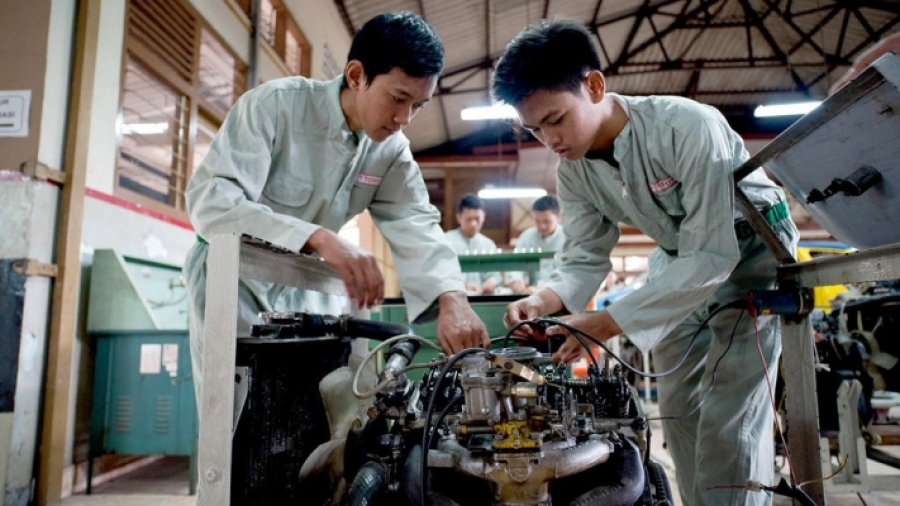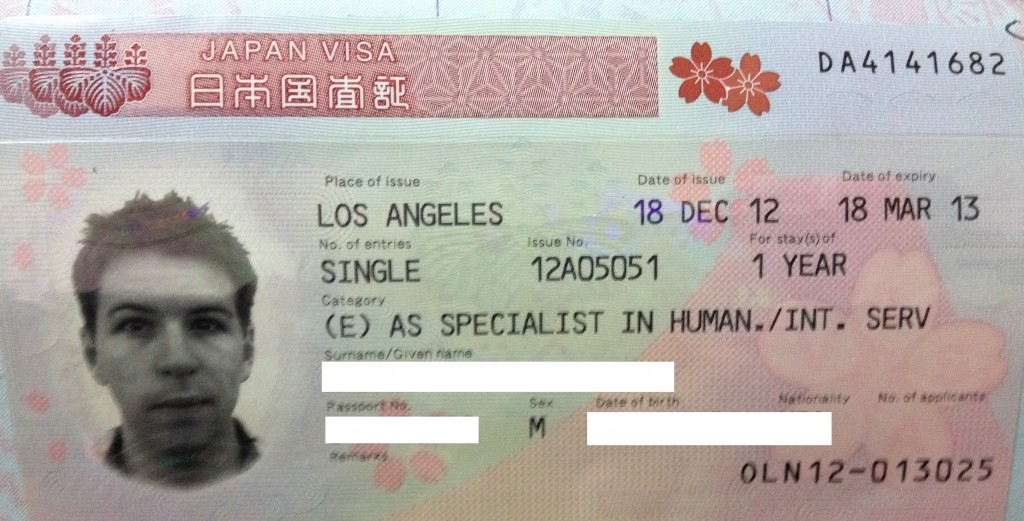Japan Training Visa In Sri Lanka
Japan Training Visa In Sri Lanka, a hundred and twenty countries can go to Japan on this program.
A good number of people dream about visiting Japan (called as the land of rising sun). There are also many who want to live, work and settle in Japan on a Permanent basis. But the fact is only few get success in acquiring the Japan Training visa owing to certain reasons.
Japan is a land of ancient tradition and culture, of people and breathtaking landscapes, of high technology and gadgets. With so much to see and do, it’s no wonder many tourists are drawn to the country. But Japan also has a different culture from other countries, which means you might have trouble at customs or finding your way around unfamiliar places. That’s where a Japan training visa comes in handy.
The Japanese government introduced the Training Visa system to encourage individuals from Asian countries who have a strong interest in studying Japanese culture and language to enter Japan legally. This visa enables those people to live in Japan for up to 3 years.
This programme is conducted on a memorandum of understanding signed between the 2 state governments of Sri Lanka and Japan. This programme is being conducted and promoted by the Sri Lanka Bureau of Foreign Employment (SLBFE) under the patronage of the Ministry of Foreign Employment Promotion and Welfare while the trainees are recruited and sent to Japan for further vocational training through licensed foreign employment agencies.
Touriangle is replete with all the relevant information you need on Japan training visa jobs, Japan training visa salary 2022, technical intern training visa Japan, and so much more. Take out time to visit our catalog for more information on related topics. You don’t want to miss this!

Japan Training Visa In Sri Lanka
Under this programme, the Japanese government has agreed to provide on-the-job training opportunities to 1000 skilled young men and women every year. At a special meeting held in Japan in April 2008, the Hon. Minister of Foreign Employment Promotion and Welfare was able to successfully negotiate with the Japanese Labour, Justice and Defence Ministers and increase the amount of Sri Lankan trainees form 500 to 1000.
This vocational training period will be for a total of 3 years, out of which the first year’s Visa is granted to them as trainees and designated Visa is granted to them for the balance 2 years.
Each trainee will be allowed to work only at the designated place of employment while it is compulsory for them to return back after the 3 years period is over.
Japan Training Visa Agency In Sri Lanka
Under the Memorandum of Understanding between the Sri Lanka Bureau of Foreign Employment (SLBFE) and Deshakthee Lanka Agencies (Pvt) Ltd, Sputnik International Education Centre Company Private Limited (Sputnik) has been recognized as a licensed institute to train caregivers for Japan. With more than 20 years of experience of sending students to Japan, Sputnik started Technical Intern Training Program (TITP) on 11th of January 2021. Now twenty five female students are undergoing a residential training at Sputnik as the first batch of Caregiver Technical Interns.
In addition to Japanese language studies and Caregiver tanning, the students are strictly taught and trained about Japanese culture including Japanese greetings, manners and ethics. Students engage in physical training every day for keeping their fitness and to stay healthy.
After 8 month of training, the students have the opportunity to be qualified as
Technical Interns to serve in Japan, as Sri Lankan branded caregivers.
Japan Training Visa Requirements
Qualifications
1. Applicants should be between 19-30 years ( preference would be given to those below the age of 25)
2. A pass for English or Sinhala Language at the G.C.E. Ordinary Level Examination
3. Applicants should be healthy
4. Should possess a minimum of 1 years work experience in the relevant field and be able to provide a certificate of service for it.
5. Preference will be given to those with vocational training programme experience
6. Knowledge of Japanese will be considered as an added advantage
Recruitment
The recruitment of trainee is done through licensed agents registered with the SLBFE. All licensed foreign employment agencies are not permitted to recruit trainee for the programme and special permission is granted to certain agencies to handle this. The number of trainees to be recruited from each Agency is limited. New recruitments will not be allowed until at lease 60% of the previous orders for trainees are confirmed. These agents are expected to adhere to the strict guidelines and regulation imposed by the SLBFE when recruiting these trainees.
Training
Trainees recruited by licensed employment agents will need to undergo training on the Japanese language, lifestyle as well as physical fitness. Japanese language training should amount to 224 hours or more. Upon completion of the course, an examination will be conducted by an outside organisation independent of the SLBFE. The successful passing of this examination is mandatory.
Bond
All trainees for Japan are required to sign a bond before leaving Sri Lanka. This will ensure that the trainees do not indulge in employment elsewhere during their stay and will also ensure that an environment conducive to the successful completion of the training programme. Trainees who do not adhere to the conditions stipulated on the bond document will have to pay the employer a sum of 2 million rupees. The signing of the bond ensures that trainees cannot do as they please while it also ensures that the welfare of the trainee as well as the employer is safeguarded.
Japan Visa Types
- Work Visas
- Investor / Business Manager
- Legal / Accounting Services
- Engineer
- Specialist in Humanities / International Services
- Intra-Company Transferee
- Artist Visa
- Entertainer
- Journalist
- Medical Services
- Professor
- Religious Activities
- Researcher
- Skilled Worker
- Dependents Visa (for family members)
- General Visas
- Cultural Activities
- College Student
- Pre-College
- Training
- Designated Activities
- Specified Visas
- Long Term Resident
- Spouse of a Japanese National
- Spouse of a Japanese Permanent Resident

Japan Training Visa Categories
The Training Visa is for Applicants who will come to Japan for the purpose of training in an organization in order to acquire technology and other skills.
The trainee system was originally created by the Japanese government to allow for the exchange and training of overseas based workers by companies in Japan.
It should be noted that an individual Applicant cannot simply become a trainee. Rather, it is necessary to belong to an organization outside Japan which sends the Applicant to a Japanese organization.
SEVEN STEPS TO OBTAIN A JAPAN TRAINING VISA
In order to obtain a Training Visa, an Applicant will need to complete the following seven steps:
Step 1
Confirm that the Applicant satisfies the preliminary requirements for obtaining a Japan Training Visa.
There are extensive and detailed preliminary requirements that apply to both the Applicant and to the organization that will be providing the training. Since a full explanation is beyond the scope of this paper, the following is a brief summary only.
General Requirements
- The technology, skills, or knowledge that the Applicant intends to obtain in Japan should not be of a type obtained mostly through the repetition of simple work.
- The Applicant must be at least 18 years of age.
- It should be expected that the Applicant will apply the technology, skills, or knowledge obtained in Japan after returning to her country.
- The technology, skills, or knowledge the Applicant intends to obtain in Japan must be difficult or impossible to obtain in the region where he resides.
Requirements for Sponsoring Organization
- The training must be conducted under the guidance of a person who is a full-time employee of the organization that accepts the applicant. That person should have at least five years’ experience in the technology, skills, or knowledge that the Applicant intends to learn.
- In some cases the sponsoring organization will be limited in terms of the number of trainees it can bring to Japan. The following is an indication
| Full time employees in sponsoring organization | Permitted number of Trainees |
|---|---|
| Over 301 | 1/20th of the full time employees |
| 201 – 300 | 15 |
| 101 – 200 | 10 |
| 51 – 100 | 6 |
| Up to 50 | 3 |
Step 2
Confirm that the proposed activities in Japan are consistent with those permitted for the holder of a Japan Training Visa.
Once the preliminary items in Step 1 have been confirmed, the actual activities the Applicant will undertake in Japan need to be considered.
The permitted activities for the holder of a Training Visa are activities to learn and acquire technology, skills, or knowledge at a public or a private organization in Japan.
Step 3
Assemble the documents required to support a Japan Training Visa application.
Once an Applicant has confirmed that her proposed activities in Japan are consistent with those outlined above in Step 2, supporting documentation needs to be prepared.
In the case of a Training Visa, the authorities require the following documents:
- A training plan that explains:
- The substance of the training,
- Why the training is necessary,
- The location of the training,
- The duration of the training, and
- The conditions of the Trainees stay in Japan.
- Documents certifying that, upon return to her country, the Trainee intends to engage in an activity that utilizes what she learned during her stay in Japan.
- Documents certifying the Trainees professional career.
- Documents certifying the Trainers professional career and qualifications to provide the planned training.
- Material describing the foreign organization which is sending the Trainee to Japan.
- Copies of the inviting company’s registration, statement of profit and loss, list of full-time staff, and list of trainees.
Although not technically required, our experience is that providing Japanese translations enhances the quality of an application. This may minimize delays in obtaining final approval.
Japan Visa’s certified immigration professionals are able to assist in the preparation and translation of all documentation required for a Training Visa.
Step 4
Submit an application for a Japan Training Visa Certificate of Eligibility (“COE”).
Once the Applicant’s activities have been confirmed and the appropriate documents assembled per steps 2 and 3 above, the next step in most cases will be to apply for a Certificate of Eligibility (abbreviated as “COE”).
A COE is a document issued by the Japanese immigration authorities. It certifies an Applicant’s eligibility to undertake specific employment in Japan – in this case, the job associated with the Training Visa application.
An application for a Training Visa COE must be submitted in person at a regional immigration office in Japan. The COE application cannot be submitted by mail or at a Japanese embassy outside Japan.
Where the Applicant is not personally available (for example because she is not in Japan or due to a busy schedule) Japanese law allows a certified immigration specialist to submit a Training Visa COE application on behalf of the Applicant.
Japan Visa’s certified immigration specialists are able to handle all the procedures associated with preparing and submitting an application for a Training Visa COE.
Step 5
Await Approval of the Training Visa COE.
The processing time for a Training Visa COE is generally four to six weeks.
Once approved, a notice is sent to an address in Japan advising that the COE is ready for collection at the regional immigration office where the COE application was originally submitted.
Where Japan Visa’s certified immigration professionals are handling the Training Visa application, the notification from the immigration authorities is sent to our office. Japan Visa then collects the COE from the regional immigration office and either forwards it to the Applicant or prepares a change of status application (see Step 6 below).
Step 6
Obtain Training Status of Residence (SOR).
Once an Applicant has the Training Visa COE in hand, the next step is for her to exchange the COE for Training “Status of Residence” (usually abbreviated as “SOR”).
Technically speaking, it is the Training SOR that will form the basis of the Applicant actually living and working in Japan.
There are two methods for converting the COE to Training SOR:
1. Exchange the Training COE at a Japanese embassy or Consul outside Japan.
This is the traditional route for obtaining Training SOR.
The Applicant first exchanges the Training Visa COE for a Training Visa at a Japanese embassy or consul outside Japan. The process generally takes two to three business days.
The Applicant then travels to Japan and is granted Training SOR at the port of entry.
2. Undertake a Change of Status to Training SOR in Japan.
In some cases, an alternative may be for the holder of a Training COE to enter Japan under the Japan Visa Waiver Program or some other form of short-term entry. The Applicant then applies for Training SOR via a change of status at a regional immigration office in Japan.
A change of status takes approximately two weeks. During that time, it is not possible for the Applicant to travel outside Japan.
Where the change of status route is utilized, Japan Visa’s certified immigration professionals can undertake the necessary procedures at the regional immigration office in Japan.
Japan Residence Card
Whether you receive your Training SOR at the airport upon entering Japan or via a change of status application filed at a regional immigration office in Japan (see Step 6 above), you will receive a Japan Residence Card.
This is an official identification card that includes an IC chip. The Residence Card contains personal information such as your name, address, birth date, residence status (in this case, Training SOR), period of stay, etc.
You are required to carry your Residence Card at all times.
Step 7
Consider applying for a Japan Re-entry Permit.
Up until July 2012, if you held Training SOR and wished to temporarily leave Japan (e.g., for vacation, business, etc.) it was necessary to obtain a Re-entry Permit for Japan in advance of travelling.
However, it is now possible to leave Japan for up to 12 months without a Re-Entry Permit.
If there is any possibility that a trip outside Japan will last for more than 12 months, an individual holding Training SOR should ensure that they have a Re-entry Permit. This can be obtained at regional immigration office in Japan.
The above is provided for general information purposes only and does not constitute advice to undertake or refrain from undertaking any action. Only qualified Japanese professionals are able to advise on Japan immigration, legal, and tax matters.

